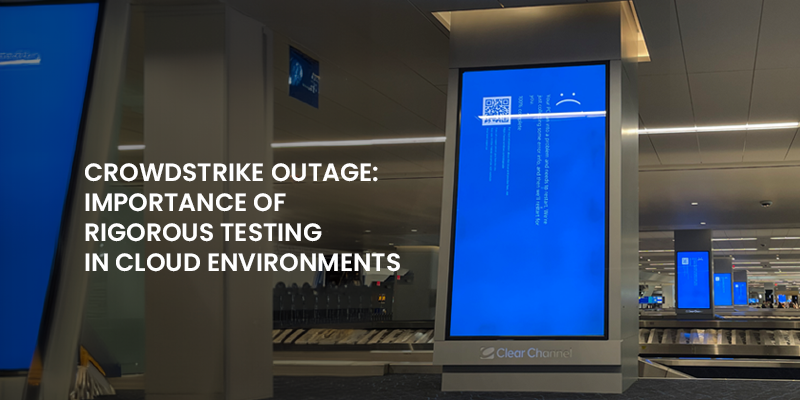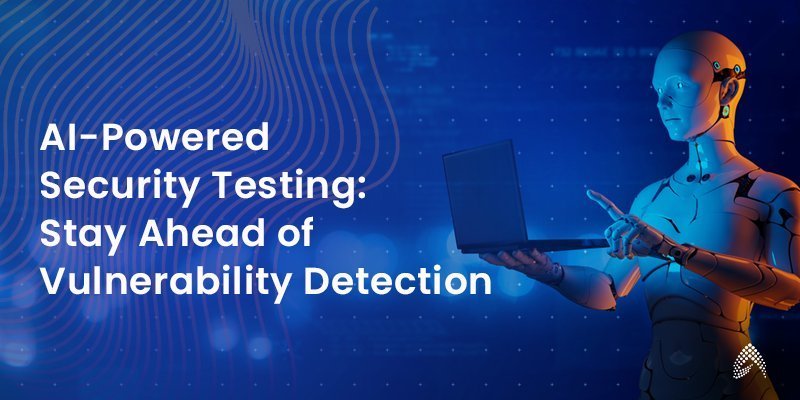Crowdstrike Outage: Importance of Rigorous Testing in Cloud Environments

The recent global IT outage triggered by a faulty Crowdstrike update serves as a stark reminder of the interconnectedness and fragility of modern IT infrastructure. The incident exposed vulnerabilities in two critical areas: vendor reliance and the risks associated with untested software updates.
Businesses have become increasingly dependent on a limited number of technology providers for critical functions. While this centralization often brings efficiencies, it also amplifies the potential impact of disruptions. The Crowdstrike incident underscores the need for diversification in the technology stack.
1. Vendor Reliance:
Businesses often rely heavily on a limited number of software providers for critical functionalities. When a single vendor experiences a software issue, the impact can be significant and far-reaching.
This over-reliance can lead to several negative consequences:
- Reduced Negotiation Power: When a business is heavily invested in a particular vendor, it has limited leverage in negotiating contracts, pricing, and service level agreements. The vendor essentially holds the upper hand.
- Increased Costs: Lack of competition can lead to inflated prices and reduced value for the services provided. Businesses become captive to the vendor’s pricing structure without viable alternatives.
- Operational Risks: A disruption or failure in the vendor’s services can have a cascading effect on the entire business. This dependence creates a single point of failure, making the organization vulnerable to unforeseen circumstances.
- Innovation Barriers: Overreliance on a single vendor can hinder innovation as the business becomes locked into a specific technology stack. Adapting to emerging technologies or exploring new solutions becomes challenging.
2. Update Risks:
Software updates, while essential for security and performance enhancements, can introduce unintended consequences if not thoroughly tested. In this case, a seemingly routine update triggered a system-wide failure, demonstrating the potential disruption associated with untested deployments.
- System Instability: Untested updates can introduce bugs, compatibility issues, or conflicts with other software, leading to system instability and performance degradation.
- Data Loss: In worst-case scenarios, faulty updates can result in data corruption or loss, causing significant damage to the business.
- Security Breaches: Updates are often released to address vulnerabilities. If not tested thoroughly, they could inadvertently introduce new vulnerabilities, leaving the system exposed to attacks.
- Downtime: System failures caused by untested updates can lead to extended periods of downtime, disrupting business operations and impacting productivity.
- Financial Loss: Downtime and data loss resulting from update failures can incur significant financial losses due to lost revenue, operational costs, and potential legal liabilities.
Cloud Architect Solutions:
Cloud architects can play a pivotal role in mitigating these risks through the following strategies:
- Comprehensive Update Testing: Implementing robust testing procedures for any software updates before deployment in production environments is crucial. Cloud-based deployment models offer the advantage of facilitating faster rollbacks in case of unforeseen issues. Learn more about AI-powered security testing.
- Multi-Cloud and Hybrid Strategies: Reliance on a single cloud provider creates a single point of failure. Cloud architects can design multi-cloud or hybrid cloud architectures to improve redundancy and mitigate risk. This approach distributes critical workloads across diverse platforms, ensuring service continuity in case of an outage within a specific cloud environment.
- Automated Patch Management: Ensuring timely and consistent updates across all systems is essential for maintaining a secure IT infrastructure. Cloud-based automated patch management systems can streamline this process, reducing human error and ensuring the timely application of critical security patches without compromising system stability.
Industries affected:
We cannot ignore the magnitude of this incident, which some have claimed is the largest IT outage in history. In less than one day, we have seen major impacts on key functions of the global economy, including aviation, healthcare, banking, media, and emergency services.
What Crowdstrike CEO Said:
CEO George Kurtz clarified that this was not a security incident or cyberattack. Instead, the issue was identified with a Falcon content update for Windows Hosts and was isolated and resolved.
Takeaways:
The Crowdstrike incident serves as a cautionary tale, emphasizing the importance of rigorous testing within cloud environments. By prioritizing comprehensive update testing, adopting multi-cloud or hybrid strategies, and leveraging automated patch management solutions, cloud architects can help organizations build more resilient and robust IT infrastructure, minimizing the risk of similar disruptions in the future.

Director – Global Delivery




